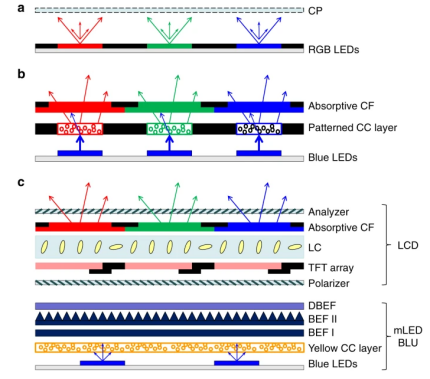Comparison of Mini/Micro LED, OLED and LCD_ Mini-LED Solder Paste

Comparison of Mini/Micro LED, OLED and LCD_ Mini-LED Solder Paste
For a long time, liquid crystal display (LCD) and organic light emitting diode (OLED) displays were the most common display technologies for mobile phones, tablets, televisions, and other devices in daily life. However, these two display technologies cannot meet people's higher demands in brightness and contrast. Micro-LED is a new display technology with LED chips<50μm, and the package density is very high. Therefore, the cost is too high to enter the market. People have also developed mini-LED technology. The chip size is slightly larger than micro-LED, which is easier to realize at the technical level, and the cost is significantly reduced. There is no doubt that it will be the mainstream display development direction for a long time in the future.
Features of different display technologies
The traditional LCD needs a backlight unit to achieve the luminous function. After powering on, liquid crystal molecules deflect and pass through filters and polarizers to provide RGB colors for pixels. However, the backlight module increases the panel thickness and limits its flexibility. In the past few years, OLED technology that emits light through organic thin films has ushered in a development opportunity, and launched a fierce competition with LCD in the market because the emissive OLED has a brighter picture, superior dark state, and lightweight. However, OLED has a short service life, which makes its competitiveness increasingly weak.
Instead, the mini/micro LED new display is becoming the focus of attention. The display brightness and service life of mini/micro LED have reached a new height, and the mini-LED can realize local dimming backlight technology to achieve a high dynamic range. Mini/Micro LED and OLED chips can be used as emissive displays. In recent years, the technology of using mini-LED as the backlight module of LCD has also been born, which has attracted the attention of many insiders. In the emissive display type, the mini-LED,micro-LED, and OLED chip acts as sub-pixels. For non-emissive LCD, the mini-LED backlight is divided into a regional structure; Each area includes a plurality of mini-LED chips to control the panel's brightness, and each area can be selectively turned on and off. The blue mini-LED chip pumps the yellow color conversion (CC) layer to produce a white backlight (Figure. 1c).

Figure 1. (a) RGB chips of mini-LED, micro-LED, OLED emissive display; (b) Color conversion of mini-LED, micro-LED, OLED emissive display; (c) Mini-LED backlit LCD.
Contrast ratio
For the multi-domain vertical alignment (MVA) mode LED, the contrast can reach 5000:1, while the edge field switch mode LCD can reach 2000:1. Local dimming technology can further improve the contrast ratio. Mini-LED can achieve the local dimming effect. If combining the mini LED backlight with LCD (mini-LED backlight LCD), the LCD effect can be significantly improved. After adding a local dimming area, the halo effect of LCD can be reduced.
Response time
The response time of LCD is criticized, which is slower than mini/micro-LED and OLED. The difference in motion picture response time (MPRT) can be felt by human eyes. MPTR is proportional to pixel response time. A high frame rate helps to reduce MPTR.
Brightness
Different display technologies can achieve different brightness. Generally speaking, the HDR brightness range of LCD is defined as 0.05-1000 cd/m2, and the HDR range of OLED display is defined as 0.0005-540 cd/m2. OLED has a short service life, and the high brightness operation can accelerate the aging of the device, which is a troublesome problem for people who infrequently replace devices. The new display technologies of mini-LED and micro-LED can easily meet these brightness standards, achieving high-brightness screen display levels and long service life.
The die bond of mini-LED chips requires ultra-fine (T6 and above) solder paste products. It is required that the solder paste can play an outstanding tackiness to catch the falling chips and prevent them from the offset. Meanwhile, the corrosive residue of the solder paste needs to be washed away after soldering. In addition to rosin-based solder paste, the epoxy-based solder paste (T6 and above) can be used for the die bond of mini-LED chips. The epoxy resin curing after soldering can enhance the mechanical strength of the solder joints. Click here to learn about Fitech's mini-LED solder paste and relative products.
Reference
Huang, Y. Hsiang, E.L, Deng, M.Y. & Wu S.T. (2020). “Mini-LED, Micro-LED and OLED displays: present status and future perspectives”. Light: Science & Applications, vol.9 (105).

















 Back to list
Back to list



